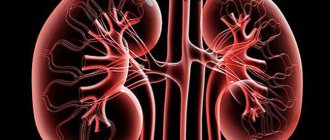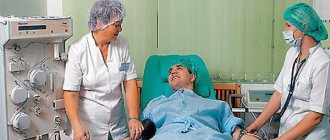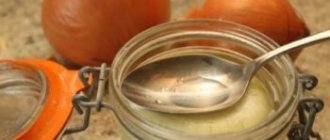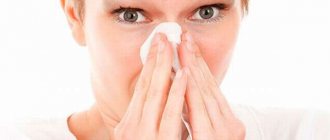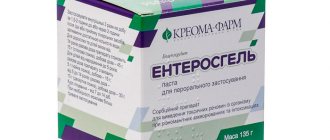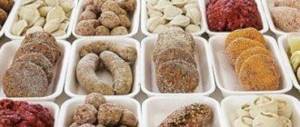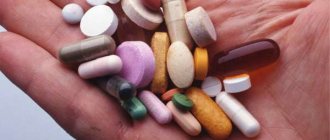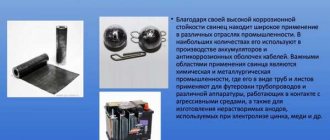As the level of salt deposits increases, diseases begin to develop. The accumulation of crystals is typical for people of different ages - children, adults, the elderly, pregnant women. The reason lies in an unhealthy diet or disturbances in the functioning of internal organs and systems. To restore health and eliminate unpleasant symptoms, you need to remove salts from the kidneys.
A little anatomy
The human urinary system is represented by the kidneys, ureters and bladder. It is designed to remove fluid formed during metabolic processes. The kidneys play a major role in this; they filter the blood from toxins. These are parenchymal paired organs on both sides of the lower back, shaped like beans. The renal tubules collect urine in them, from which urine is sent to the renal pelvis. The kidneys maintain the stability of the internal environment of the body; they regulate cation-anion exchange, i.e. mineral. In this way, the body gets rid of excess minerals by excreting them in the urine.
Salt diathesis is not a separate nosology, but rather a condition that can accompany various pathological processes, but it requires taking action. This feature of the body can be congenital or acquired. If left untreated, this condition with increased formation and deposition of salts in the kidneys can easily lead to kidney failure. For stones larger than 5–7 mm, surgical removal is required. Difficulties in treatment are caused by the fact that a person goes to the doctor late due to the asymptomatic deposition of salts until a certain time. As stones move, they can damage the tissues of the kidneys, ureters and bladder, which will certainly cause inflammation and infection.
At least 40% of the population is at risk. There are no age restrictions; the process is observed even in children. But it should be noted that dysfunction of salt balance in children is rare, especially in small ones. Children develop more salt problems already in adolescence. In women, urinary sediment forms more often, this happens because in the female body in general the concentration of salts is always higher than in men. Salt diathesis is prone to relapse.
Prevention
Prevention consists of treating urological diseases, normalizing the work schedule, and following a diet. To avoid salt deposition in the kidneys, you should:
- eat a balanced diet;
- eliminate bad habits;
- avoid physical inactivity;
- observe drinking regime;
- take vitamin and mineral complexes.
People with metabolic disorders should limit foods that shift urine pH to acidic or alkaline. If you are prone to stone formation, you should be examined by a nephrologist 2 times a year. Timely treatment and removal of salts from the urinary organs prevents complications - kidney stones, urinary stones, hydronephrosis.
Etiology of the phenomenon
The specific etiology of the accumulation of salts in the kidneys has not been clarified, but this is a consequence of many factors (malnutrition has already been discussed). Promote the appearance of sediment:
- sedentary work, lack of movement;
- lack of water in the body, when urine becomes concentrated (at the same time, urine becomes denser and its acidity changes, then salt crystals precipitate);
- mono-diets;
- consumption of obviously acidic foods with a high content of vitamin C - sorrel, currants, plums, kiwi, etc.;
- increased consumption of dairy products, cheeses (lots of calcium), mushrooms, sweets, chocolate, baked goods;
- inflammatory kidney diseases;
- nephroptosis greatly contributes to nephrolithiasis;
- During pregnancy, hormonal changes in the body occur, and the risk of salt deposits increases;
- various pathologies of the genital area in both men and women (prostate hyperplasia, uterine fibroids, cysts, endometriosis, etc.);
- living in countries with hot climates;
- taking certain medications - diuretics, sulfonamides, OK, potassium supplements;
- thermal procedures and increased physical and sports activity;
- bone diseases;
- a- and hypervitaminosis;
- water hardness in some areas;
- lack of UV rays;
- tumors in the urinary tract,
- scarring of tissue in them;
- hormonal imbalances;
- Drinking exclusively boiled water leads to the development of magnesium deficiency, which plays an important role in the process of mineral metabolism.
When detecting salt in the kidney, the reasons are quite difficult to find out, because there are always a lot of them. In children, the following factors may be decisive:
- hereditary predisposition;
- congenital tubular anomalies;
- incomplete formation of the urinary system, lack of an enzyme that is responsible for transporting salts in the tubules;
- unhealthy diet with a predominance of protein;
- improper complementary feeding in infants;
- hyperkalemia;
- lack of vitamin D.
In the first 3 years of a child’s life, the rate of sodium excretion from the body is slowed down, which always causes an imbalance in the salt balance.
How to cleanse the kidney gland with water?
In fact, using water is considered the easiest method to remove salts and other harmful substances from the kidneys, as water naturally flushes harmful components from the body, which leads to cleansing of the kidney gland. Salt will be excreted rather slowly, but if you constantly adhere to certain norms of fluid intake per day, you can achieve good results. It is best to use this method not as the main one, but as an additional method to the main method of treatment.
As you know, a person is normally required to consume at least two liters of fluid per day; it is best not to ingest more than four liters of water so that the kidneys can cope with the load. The amount of fluid depends on the person’s body weight, as well as what kind of physical activity he does during the day; weather conditions will certainly play a role. To bring the balance of water in the body back to normal, and also to help the kidneys cleanse themselves faster, you need to drink about 1-2 glasses of water in the morning, although children can drink less liquid.
If urinary tract diseases are added to the main problem, the doctor may prescribe the patient to take special mineral water; per day it will be necessary to consume about one and a half liters of such liquid, while taking small sips, and drinking water throughout the day. But mineral water cannot replace ordinary liquid, so clean drinking water is consumed by a person in the usual volume. The course of such treatment can last no more than six weeks, but not less than three weeks; it is necessary to conduct such courses about three times a year.
Classification of salts in the kidneys
The formation of salts is determined by the acidity of the internal environment. When acidity increases, urates, oxalates and uric acid are formed. When the alkaline reaction predominates, phosphates, oxalates or urates appear: the former give the urine a whitish tint, oxalates cause the urine to be dark in color (the presence of oxalic acid or calcium), urates give a tint of redness in the urine. Salts are often mixed - in 50% of people with urolithiasis.
The most common are oxalates and phosphates; 65% of cases of nephrolithiasis (KD) are the formation of kidney stones. 20% - ammonium phosphate-magnesium mixture and struvite (ammonium phosphates), they appear against the background of infections in the urinary tract. 10% - urates, formed when uric acid increases due to gastrointestinal diseases. 5% - xanthines and cystines, appear with congenital pathologies and genetic abnormalities. Cystines consist of sulfur compounds of amino acids, xanthine compounds are formed from the purine compound of xanthines, under-oxidized to uric acid. The hardest stones that are difficult to remove are oxalates. In addition to salts, calculi may also contain organic compounds - proteins containing fibrin, remains of microorganisms and salts; they are most often soft and small in size. Cholesterol stones are even less common.
Salt metabolism
Mineral (salt) metabolism - intake, distribution, absorption and excretion of salts. An imbalance causes their deposition and accumulation in the body.
Calcium, potassium, sodium and magnesium salts maintain the acid-base balance of the blood, its coagulability, and participate in the formation of enzymes.
Sodium . The most important alkaline element. In the body it is up to 15g, two thirds contain extracellular fluid, muscle tissue, the rest is bones. Table salt contains inorganic sodium.
The body benefits from the organic form, which contains celery, red beets, peas, potatoes, apricots, tomatoes, buckwheat, oats, black currants, garlic, and apples.
For example, red beets contain up to 50% organic sodium, up to 20% potassium, and up to 8% chlorine.
Signs of organic sodium deficiency: feeling thirsty, tired, calf cramps, prone to sunstroke.
The organic form does not form excess sodium salts in the body.
Chlorine _ Participates in the production of hydrochloric acid in gastric juice and is necessary for the cells of the nervous system. Comes with table salt.
Potassium . Necessary for neuromuscular transmission, heart, kidneys, brain.
Signs of deficiency: irritability, indecision, loss of strength, impaired neuromuscular conduction, poor appetite, insomnia, headache, dry skin, itching, acne, poor hair growth, constipation, decreased sugar levels, increased sensitivity to cold.
Potassium-rich foods: potatoes, cabbage, pumpkin, celery, apricots, dried apricots, peach, plum, raisins, prunes.
Potassium and sodium are antagonists:
- Potassium is inside the cells of the body, sodium is in the intercellular fluid and plasma.
- Potassium has a diuretic effect, sodium retains water and causes swelling.
- Sodium salts are removed by foods rich in potassium. Potassium salts remove sodium-rich foods.
Magnesium is part of the liver, muscles, and bones. Morning lethargy and activity in the afternoon are associated with magnesium deficiency.
The intake of magnesium removes salts from the body and prevents their deposits in the kidneys and gall bladder. Its absorption requires the health of the thyroid and parathyroid glands.
There is a lot of magnesium in cocoa, hazelnuts, and soy.
Calcium . Stones in the kidneys and gall bladder are calcium, the body takes the element from bone tissue. Calcium neutralizes harmful acids, its intake is important for health.
Civilized eating habits prevent the absorption of an important element. For example, the body does not absorb calcium from foods after heat treatment (boiled milk).
The kidneys remove useful calcium when there is an excess of inorganic sodium (table salt). The loss of calcium and an increase in its content in the blood is caused by the abuse of sweets.
In the kidneys, oxalic acid forms salts with calcium; they are difficult to remove from the body because they are insoluble in water.
Excess animal protein (meat, fish, eggs) causes kidney stones. Include organic forms of potassium, magnesium, and vitamin C in your diet.
Symptomatic manifestations
With salt in the kidney, there are usually no symptoms, but the frequency of chronic cystitis and urethritis in such people is noteworthy. When sand is already formed in large quantities, and stones appear, patients begin to notice increased frequency and pain in urination, nausea, pain in the lower back and groin area, pelvic area, lower abdomen (they are usually aching, radiate to the thigh and can last for hours ). But they can also manifest themselves in the form of renal colic when a stone moves and the ureter is blocked; this condition is considered an emergency. In this case, intense, sharp pain occurs; it does not depend on posture and is not relieved by analgesics. Painful shock may develop.
In addition to pain, the following are characteristic of salt deposition:
- low-grade fever;
- increased blood pressure;
- reddish tint of urine due to the appearance of blood in it (microhematuria);
- lack of feeling of thirst;
- when urinating, little urine is released, pain appears during micturition;
- the urge to go to the toilet becomes more frequent, but there is no urine - false urges.
It has been observed that symptoms occur more quickly in women, but complications are greater in men. The child may have no symptoms at all. The disease is discovered accidentally during examinations for another reason. The child may urinate more often and complain of pain, but produce little urine when urinating.
The urine itself may become cloudy - a sign of complications. Among other things, the child complains of headaches, nausea, eats little, loses weight, is lethargic, gets tired quickly, begins to study worse due to memory loss, and finds it difficult to concentrate in class. Young children may be developmentally delayed. The most common salts in children's urine are urates, phosphates and oxalates. Sick children are slow, prone to allergies, weight gain and gastrointestinal diseases. Babies sleep restlessly due to increased urge to urinate.
Cleansing the kidney gland with lemon
To prepare the mixture, you need to take two large lemons, it is also worth preparing a couple of large spoons of high-quality bee honey and a couple of sprigs of regular fresh parsley. The lemons are passed through a meat grinder along with the peel, the parsley is also finely chopped and the required amount of honey is added to the resulting mixture. The mixture turns out to be quite thick; take a large spoon of it every morning before the morning meal.
Salts in the kidneys are an accumulation of small pebbles up to 1 mm in size in the collecting-pelvic system (PSS), forming a crystalline suspension. In the absence of concomitant urological diseases, it is asymptomatic. The first signs appear when large stones form from salt deposits. The presence of salts in the urinary system is indicated by frequent urge to go to the toilet, burning sensation when urinating, pain in the lower back, and fever.
Principles of treatment
Antispasmodics and analgesics are widely used in treatment; they eliminate pain and relieve pain in the lower back and lower abdomen. The second step is to eliminate the cause of salt deposition, if it is an inflammatory process, pathology of the genital area, and metabolic and hormonal disorders. For urogenital infections, a short course of Canephron is prescribed (not recommended for children under 6 years of age); Cystenal, Cyston, Prolit, Fitolysin, Urolesan, Asparkam (helps get rid of urates and oxalates). They all dissolve and remove salts.
How can I remove excess salt? Urodan, Atophan and Urozin are often prescribed in a short course for a week. Preparations containing terpenes are used. They have bacteriostatic, antispasmodic and sedative effects. These include Avisan, Enatin, Marelin, Olemetin, Fitolit, etc. Salts will be eliminated from the kidneys faster if the doctor prescribes diuretics: Clopamide, Piretanide, Veroshpiron, Furosemide, etc.
Preventive therapy with anti-inflammatory drugs is also prescribed: they are necessary because the expelled salts can damage the mucous membrane of the urinary tract with subsequent inflammation - cystitis or urethritis. When pathogenic causative agents of nephroinflammation are identified, antibiotics are indicated.
The process of expelling salts is always associated with painful sensations, so bed rest is prescribed, and the presence and supervision of a doctor is necessary for the entire duration of treatment. When removing sand, it is important to drink more fluids to avoid dehydration. When cleansing the kidneys of salts, a doctor’s supervision is required constantly; the prescription of any remedy should begin only in a specialist’s office.
How to remove salts without drugs? Along with drug treatment, herbal medicine is widely used, but only after determining the type of stones. If salts are detected in the urine, you do not need to ring all the bells at once: it is quite possible for them to appear after feasts and holidays. But if, after a week of proper nutrition, salts continue to be present, you need to be examined by a doctor. If conservative treatment is ineffective and the disease progresses to the next stage, a surgical solution is used. This is especially important when stones form.
Medicines
Drug therapy involves the use of:
- diuretics, diuretics;
- means that promote the breakdown and liquefaction of salt deposits;
- anti-inflammatory medications, the action of which is aimed at suppressing urethritis or cystitis;
- in serious cases, for example, when salts are converted into stones, surgical intervention is required in conjunction with a strict diet, complete exclusion of fruits containing vitamin C and caffeine-containing drinks.
Antispasmodics and painkillers will help reduce pain when urinating and eliminate pain.
First of all, the doctor prescribes treatment aimed at identifying and eliminating the factors that provoked the formation of salts, for example, previous diseases of the urogenital tract - cystitis, urethritis, gynecological diseases and others.
If salt imbalance is caused by genitourinary infections, use:
- Cyston.
- Canephron.
- Furagin.
- Urolesan and other bactericidal drugs.
Drug treatment is always prescribed by a specialist, and the entire treatment course must be carried out under medical supervision, since the removal of salts from the kidneys is often accompanied by pain.
In addition, patients undergo a course of herbal medicine along with medications.
Salt deposits in the kidneys in children often occur due to poor nutrition. To avoid the lack of effect of treatment and undesirable consequences, it is necessary to monitor the diet during drug therapy, exclude the consumption of food that can cause an exacerbation of the pathology, and limit meat and dairy dishes.
Special diet
Diet can help in uncomplicated cases. To stop the formation of stones and ensure their removal, use a diet with a low salt content and a large volume of drinking water - at least 2 liters per day and a glass of water at night. It is also good to eat foods with a diuretic effect: watermelon, cranberries, lingonberries, cucumbers, apricots, carrots, pumpkin, broccoli. For phosphates, lemon juice, buckwheat and oatmeal are welcome. It is good to consume cereals, fish and greens.
The following products perfectly remove salt from the body: beets, seaweed, olive oil, legumes, potatoes, honey, cereals, green tea, berries and fruits. Fewer foods high in calcium, potassium and phosphorus should be consumed. Coffee, strong tea, fried foods, smoked meats, alcohol, tomatoes, sorrel, figs, spinach (contain a lot of oxalates) are excluded. The child’s menu is enriched with sources of magnesium and vitamins A and B; the consumption of legumes, meat, and chocolate should be reduced.
When to get rid of salts
Age-related changes weaken the function of the excretory systems, they remove salts worse. The content of magnesium and potassium in the body is reduced, and sodium is increased.
Each type of salt causes its own diseases:
- Urate salts are the cause of gout.
- Phosphates affect the spine (osteochondrosis).
- Oxalates form deposits in muscle tissue.
When salts are deposited, each grain of sand forms a center of crystallization and stone growth. A balanced diet reverses the process.
General rules for maintaining blood composition and preventing salt deposition:
- Cooked food forms oxalic acid salts in the body. They are eliminated by raw food (organic oxalic acid), so include raw vegetables and fruits and nuts in the menu. The intake of 1 part of cooked food should be compensated with 3 parts of raw food.
- Use acidification and alkalization techniques to dissolve deposits and remove salt from the body.
- Drink up to 8 glasses of pure water, infusion of herbs or leaves (black currant, raspberry, mint) throughout the day.
Pain in the joints, spine, muscles appears after 25-30 years or later.
Folk remedies
Treatment with folk remedies should be agreed with a doctor. Herbal medicine includes those herbs that are included in the State Pharmacopoeia. These are bearberry, corn silk, knotweed, horsetail, knotweed grass, currant and strawberry leaves, birch buds, rose hip syrup, bud collection - all of them are sold in the pharmacy. For oxalates, decoctions of spruce and pine cones are used. Good solegons are decoctions from carrot or pear shoots and rice.
But some diuretic herbs cannot be used because they contain anthraglycosides, which irritate the urinary tract and can even cause the death of nephrons: St. John's wort, madder, senna, rhubarb rhizomes, sorrel, buckthorn bark. In men they can provoke cystitis and prostatitis, in women - cystitis. These herbs should not be used by pregnant women, gynecological problems or hemorrhoids.
An infusion of sunflower roots has a good effect in expelling salts. If there is no allergy to citrus fruits, tangerine treatment is used: eating 1 kg of tangerines daily for a week, then a week break and repeat. Tangerines have good salt removal properties.
When treating children, strawberries are used - its juice is taken three times a day before meals. The use of garlic and lemon can help - their infusion when taken in the morning perfectly removes salts. The infusion of bay leaf is taken for 3 days with a week break.
Why uric acid crystals appear in urine and how to treat them
Purines are one of the main elements that make up the cells of our body. During their breakdown, uric acid is formed. It enters the blood and is then excreted in the urine. If uric acid crystals begin to be present in the urine, then this is a sure sign of an incorrect synthesis process. Let's figure out what this means. This pathology is called “uraturia”. It appears when a lot of uric acid is formed, some of it precipitates, which has the form of salts or crystals. This is dangerous because salts are deposited in the joint capsules, destroying them.
Salt diathesis in pregnant women
In pregnant women, the pathology is accompanied by nausea, vomiting and fever. Symptoms occur due to hormonal changes during gestation. The danger is that edema and hypertension may develop. It is wrong to consume foods high in calcium (bananas, nuts, dairy) and oxalates during pregnancy. For drinking, use exclusively purified water. When magnesium decreases, the calcification process starts, which is very harmful. The water regime must be observed. Some women believe that if they drink less, they will protect their kidneys from stress. In fact, everything happens exactly the opposite. In your diet you should avoid processed foods, fast foods, and canned foods. Limit salt to 2 g per day. No more than 2 cups of juice per day.
Prevention usually consists of the following:
- diet with specified products;
- physical activity should be sufficient;
- avoid hypothermia and overheating;
- reduce salt.
Children need to control the consumption of meat, chocolate, bananas, mushrooms, nuts, and baked goods. Remember that many foods contain hidden salt, for example, eating 1 piece of white bread will immediately give you 170 mg of salt, and 1 tbsp. l. soy sauce contains 1 g of salt! 1 serving of pizza will give you another 900 mg of salt. All this can be processed and safely eliminated from the body with sufficient physical activity. But if you sit in the office all day at the computer or have meetings, drink regular mineral water, and even with gas, the result will be on both your face and kidneys.
Salts are necessary for the human body for the normal functioning of all organs and systems. They are detected in small quantities in human urine. Pathology will be considered their complete absence or excess of the norm. Removing salts from the kidneys is a long and labor-intensive process, but if you follow all the doctor’s instructions, the body will quickly cope with the disease.
The main function of the kidneys is to filter the blood from waste, salts, and toxic substances. Elevated levels of minerals in the urine can be detected due to nutritional disorders and lack of fluid intake. Changes for the worse will occur if a person eats a lot of sour or salty foods, vitamin C, and mineral water.
Salts in the kidney can be deposited after infections. Simple hypothermia can cause chronic health problems.
Salts in the kidneys, due to the pathological structure of the organs, are formed due to the abnormal structure of the epithelium, which leads to impaired uric acid metabolism.
Other reasons why salt deposition occurs in the kidneys:
- hereditary predisposition;
- slow removal of urine from the body;
- stagnant processes;
- metabolic failure;
- dysfunction of the adrenal glands and pituitary gland;
- hormonal disbalance;
- pathology of the thyroid gland.
Both men and women face this problem with equal frequency. A person becomes more vulnerable to various diseases if he leads a sedentary lifestyle and the body does not receive the required amount of vitamin D. Salts will be deposited if, as a result of metabolic disorders, the content of uric acid and calcium in the patient’s blood increases.
Increased concentration of urine is observed with low fluid content in the body. In this case, salts such as urates, oxalates, and phosphates appear. This can happen with uncontrolled use of diuretics.
At the initial stage, when the amount of salt crystals is still small, the disease does not manifest itself. Symptoms may be so minor that they do not cause concern to the patient. Sometimes blood pressure rises and swelling appears.
The first signs of the disease appear when the crystals move towards the ureters, thereby causing irritation of the mucous membrane. The process of movement of salts can lead to inflammation, as a result of which urine stagnates in the calyces and pelvis of the kidneys. Then salts in the kidneys and symptoms in an adult manifest themselves in the same way as cystitis, urethritis, namely discomfort during urination, frequent urge. A person may notice that the color of the urine has become darker, closer to brown, and streaks of blood have appeared.
With the onset of crystallization and the beginning of their movement, the patient feels renal colic, heaviness is felt in the lower abdomen and lower back. In addition, the general condition of the body worsens, the temperature rises, a feeling of nausea appears, vomiting and bloating are possible. The pain may be intermittent and may subside with changes in body posture and taking painkillers.
Symptoms of salts in a child
The child's body is more sensitive to pathological changes. In addition to pain and problems with urination, behavior changes. Newborns become capricious, whiny, restless, have difficulty sleeping at night and urinate frequently. Older children also become irritable, slow, and lose their appetite.
A sick child begins to lose or gain weight, concentration falls, and a headache appears. Due to weakness and inactivity, delays in physical development may occur.
As a preventive measure, it is not recommended to feed your child excessive amounts of meat, protein products, seafood and mushrooms. An unhealthy diet leads to an imbalance of uric acid in the body. If a child has salts in his kidneys, sweets should be excluded from the diet.
Salt diathesis during pregnancy
In pregnant women, the symptoms are more pronounced: the temperature rises, nausea and vomiting appear. Salt crystals in the kidneys during pregnancy can harm both the mother and the unborn child. Due to the slow outflow of urine, blood pressure rises and swelling of the limbs appears. The cause of the pathology may be an incorrect, unbalanced diet, drinking only purified or mineral water.
A pregnant woman should not be afraid of edema; the amount of fluid she drinks should not decrease.
Enemy 3. Drastic weight loss
With sudden weight loss, there is a danger that kidney prolapse may develop. The fact is that the kidneys are surrounded by fatty tissue, which serves as a kind of bed for them, protecting them from injury and other troubles. With a sharp weight loss, not only the subcutaneous layer of fat “melts,” but also the internal one. As a result, the kidneys are left without support. In addition, the muscles and ligaments that hold them in a secure position weaken. Therefore, you can only lose weight very slowly and gradually, then the kidneys will remain in place.
Diagnostics
To make a diagnosis, it is necessary to undergo clinical diagnostics. The following tests are required:
- General urine analysis. Allows you to determine the type of salt crystals and their quantity. At the initial stage of the disease, various acids are present in large quantities in the biomaterial. After an alkaline reaction, it is determined whether there are phosphates or carbonates in the urine.
- General blood analysis. Shows whether there is inflammation. Also, the amount of urea, creatinine and nitrogen in the blood is determined. All of the above indicators increase with salt diathesis.
With an ultrasound examination, the doctor may detect changes in the form of salt deposits in the renal pelvis or tubules. X-ray examination is used as an additional method. An x-ray is necessary if stones are suspected. The photo will show their size and location.
Diagnostic measures
Timely diagnosis is difficult due to the virtual absence of symptoms. To identify salts in the urinary system, they resort to hardware and laboratory testing. The diagnostic plan includes the following methods:
- Clinical urine analysis. A suspension consisting of salt crystals is found in the liquid. They precipitate when the pH level changes. Therefore, a violation of the acid-base balance of urine is an indirect confirmation of salt diathesis.
- Biochemical urine analysis. The presence of salt crystals in the kidneys is indicated by an increase in the level of calcium, inorganic phosphorus, oxalates, magnesium, etc.
- Ultrasound of the kidneys. The small size of the salts makes it difficult to see them accurately. In 90% of cases, when microconcretions are deposited, the echogenicity of the kidneys increases.
- Excretory urography. A contrast solution is injected into a vein, which reaches the kidneys after 4-5 minutes. During its circulation through the urinary system, the nephrologist performs an X-ray examination. From the photographs taken, it is possible to determine the amount of salts in the chest and other organs.
Drug treatment
Before removing salt deposits from the body, it is necessary to cure or eliminate inflammatory diseases. In order for the treatment to have the desired result, it is necessary to establish a diet and drinking regimen, and normalize the work and rest schedule. Most often, after these simple measures, the tests return to normal.
If the cause of diathesis is more serious, then treatment is carried out with the help of medications that help dissolve and remove salts. To speed up the process, diuretics are prescribed (if there are no large stones).
Therapeutic treatment involves taking the following groups of drugs:
- antibiotics;
- painkillers;
- uroseptic;
- NSAIDs;
- antispasmodic.
If large stones are found that cannot pass on their own, surgery is recommended. When stones pass, they can clog or damage the passageways.
Urogenital infections are eliminated with the drugs Urolesan, Canephron, Furagin, Cyston. Herbal medicine has an additional effect.
The breakdown of salts and small stones is facilitated by Cyston, Asparkam, and Prolit. The drug is prescribed by the doctor after determining the type and composition of the salt.
There is no point in treating diathesis without following a diet. Every day you need to drink 2 liters of water, in hot weather and during physical activity this amount increases.
If tests show the accumulation of urate salts, then the patient should give up legumes, sweets, meat and offal. In the presence of oxalate salts, it is necessary to reduce the intake of oxalic acid into the body. They are found in spinach, sorrel, rhubarb, and tomatoes.
How to remove salts from the kidney using folk remedies and following a diet? You need to train yourself to eat as little salty foods as possible. You need to give up semi-finished products, smoked meats, and sauces. Also, it is necessary to reduce the amount of phosphorus, calcium and potassium, which means giving up cottage cheese, nuts, and dried fruits.
How to cleanse your kidneys with berries
There is one fairly simple and tasty method of eliminating salts from the kidneys; for this you should use lingonberries or cranberries; these berries not only have excellent taste, but also have a huge list of beneficial properties. It is recommended to choose one of these berries and consume a glass per day, and to improve the taste, you can add just a little natural honey to them.
Treatment using traditional medicine methods
Traditional medicine knows how to remove salts from the kidneys. Natural remedies only help speed up the healing process, but do not replace drug therapy.
- Recipe 1. 1 kg. strawberries are mixed with 200 gr. sugar, drink the resulting juice three times a day before meals.
- Recipe 2. You need to eat 1 kg daily for a week. tangerines.
- Recipe 3. For 400 gr. Take about 25 pieces of boiling water. bay leaf. After a few hours, the decoction can be used for treatment. The entire decoction is drunk daily for 3 days. The course is repeated every other week.
- Recipe 4. 150 gr. garlic and 3 pcs. lemons are mixed using a blender or in another way, poured with a liter of boiling water. You can start drinking the decoction after a day of aging. Every morning you need to drink 50 grams. decoction
- Recipe 5. Sunflower roots are brewed according to the instructions on the package. The decoction is used instead of water, that is, two liters for two days in a row.
Treatment with folk remedies includes juice therapy. Lemon, beet, carrot, and cucumber juice are beneficial for the kidneys. Decoctions of chamomile, thyme, coltsfoot, calendula, St. John's wort, horsetail, birch buds, corn silk, and bear's ears will help improve your condition.
Salt crystals in the kidneys can be quickly removed by following the recommendations of a doctor and nutritionist. Once faced with a problem, preventive measures will have to be followed for the rest of your life.
Salts in the kidneys and, accordingly, in the urine are always present in small quantities, which is not a pathology. The disease occurs when the concentration of mineral compounds increases. The type of substances that are formed in the urine depends on the acidity of the internal environment.
With increased acidity of urine, the following are formed:
If urine is overly alkalinized, phosphates or ammonium urate salts can form.
Friend 1. Proper shoes
To make your kidneys feel comfortable, your shoes should not be high-heeled. The heel changes the position of the pelvic bones, reproductive organs and ultimately the kidneys. You can’t go to the other extreme - constantly wear sneakers or other sports shoes. The foot, squeezed all day in such shoes, and even at elevated temperatures and humidity - after all, such shoes are not ventilated - changes. The active points located on it, on which the health of many of our organs depends, “dormant”.
Causes of salts in the kidneys
The cause of salts in the kidneys is not always a disease. Often, an increase in the concentration of minerals in the urine causes a diet violation. In women, salts in the kidneys are more common, this is due to metabolic characteristics and hormonal conditions. Congenital structural features of the epithelium or disorders of uric acid metabolism can also lead to pathological concentrations of mineral compounds.
In healthy people, salts can appear due to the abuse of one food product, mineral water or regular table salt.
The presence of salts in the kidneys of a child does not necessarily indicate illness or the onset of pathological processes. This condition sometimes occurs due to the fact that baby food has a number of features, and the urinary system is not yet fully formed.
Symptoms of salts in the kidneys are often absent, but if salts in the urine constantly accompany a healthy person, this can lead to chronic cystitis and urethritis. Subsequently, in the presence of constant inflammation of the pelvis and high mineral content, small stones may appear first, and then large stones.
As a result of these pathological processes, the patient may complain of frequent and painful urination, and a feeling of heaviness in the lower abdomen. If stones form and move from the kidneys through the ureter, an attack of acute renal colic is possible, which will require emergency medical attention.
Inflammatory kidney diseases can either contribute to the formation of salts in the urine or be a consequence of a high content of these substances. If the diet is systematically violated, it is not possible to cure or stop the progression of diseases with this pathology.
Friend 3. Smart choice of underwear
The ideal option for those with weak kidneys is cotton underwear. No synthetics, no matter how tempting and beautiful it may seem. Give up the habit of wearing tight jeans, shorts, and leggings. Such clothing tightens the body and disrupts blood circulation in important vessels that carry blood to the kidneys.
Very short skirts are also undesirable. In the cold season, this is a risk of catching a cold, and in the summer it is very dangerous to sit in them directly on benches, seats in transport, desks - you can catch an infection and freeze your kidneys.
